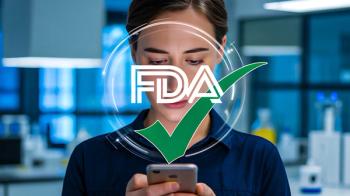
- June 2011
- Volume 15
- Issue 1
Acetaminophen: Little Bottles, Big Confusion
Less than half of patients read the ingredients of OTC pain relievers, and many don't recognize the consequences of exceeding the recommended maximum daily dosage.
Less than half of patients read the ingredients of OTC pain relievers, and many don't recognize the consequences of exceeding the recommended maximum daily dosage.
A surprisingly large number of patients still don’t know what is in the OTC pain relievers they take, and how much is too much.
Despite the fact that the label on every bottle of OTC painkillers contains not only the active ingredients, but also directions on how many pills can be taken within a specific time period, there is still a lack of awareness among patients in terms of proper adherence. In the United States, acetaminophen overdose has surpassed viral hepatitis as the leading cause of acute liver failure, and misuse contributes to more than 30,000 hospitalizations annually, according to a study published in the American Journal of Preventive Medicine (AJPM).
In the report, researchers propose a number of solutions to help prevent overdoses going forward. In the meant time, it is critical that patients develop a better understanding of what is in the pills they pop to get rid of headaches or soothe muscle pain.
The Facts About Acetaminophen Overdose
Acetaminophen is one of the most commonly used pain medicines in the United States, with 25 billion doses sold in 2008, a New England Journal of Medicine study found. Taken primarily to reduce pain or fever, it is found in several prescription and OTC products. When used as labeled acetaminophen is “generally safe”; however, “the ubiquity of the drug and its relatively narrow therapeutic index create the potential for serious harm from both inadvertent and intentional overdoses,” the NEJM article stated.
According to the AJPM study, half to two-thirds of overdoses are unintentional, suggesting that the root cause is likely poor understanding of medication labeling, or failure to recognize the consequences of exceeding the recommended maximum daily dosage. Although many patients might think they know how many pills can be taken within a 24-hour period, the margin between a therapeutic and a dangerous dose is actually quite small.
The FDA recommends that adults not take more than 1 gram (1000 mg) of acetaminophen per dose or 4 grams (4000 mg) per day. Anything more, even over a period of just a few days, can put patients in serious danger.
What that amount translates to, however, differs by product. For example, with Regular Strength Tylenol, patients can take 2 tablets, caplets, or gelcaps (each of which contains 325 mg of acetaminophen) every 4 to 6 hours while symptoms last, and should not exceed more than 12 tablets in a 24-hour period. With Extra Strength Tylenol, patients can take 2 pills (each of which contains 500 mg of acetaminophen) every 4 to 6 hours; however, they should not take more than 8 pills in a 24-hour period. Another commonly used product, Excedrin Extra Strength, contains 250 mg acetaminophen and 250 mg aspirin in each tablet, and patients are not to exceed 8 tablets in 24 hours.
In terms of active ingredients, all OTC pain medications are not the same (Table).
Prescription Products Containing Acetaminophen
OTC Products Containing Acetaminophen
Vicodin
Codeine
Oxycet
Percocet
Fioricet
Darvocet
Benadryl
Dimetapp
Excedrin
Midol
NyQuil/DayQuil
Robitussin
TheraFlu
Triaminic
Sudafed
Vicks
Source: FDA List of Marketed Acetaminophen-Containing Prescription Products
Source: National Pain Foundation
The Root of Nonadherence
However, although all of this information is clearly marked on the products’ packaging, many patients either don’t read it or don’t understand it, according to the AJPM study, which was led by researchers at Northwestern University Feinberg School of Medicine in Chicago.
The study reported that just 31% of participants knew that Tylenol contained acetaminophen. In addition, 75% of participants knew that Bayer contained aspirin; 47% knew that Motrin contained ibuprofen; 19% knew that Aleve contained naproxen sodium; and 19% that knew Advil contained ibuprofen.
Overall, participants demonstrated limited knowledge of the concept of an active ingredient, noted the researchers, adding that some had heard of acetaminophen and ibuprofen but could not describe the difference.
“It’s incredibly alarming,” said Michael Wolf, PhD, MPH, an associate professor of medicine at Northwestern University Feinberg School of Medicine and senior author of the study. “People may unintentionally misuse these medicines to a point where they cause severe liver damage. It’s easy to exceed the safe limit if people don’t realize how much acetaminophen they are taking. Unlike prescription products, there is no gatekeeper, no one monitoring how you take it.”
Few participants in the lower-literacy groups had heard of acetaminophen. In general, patients paid attention to the active ingredient in the medicine only if they knew of a contraindication for one of their other medicines, and relatively few participants mentioned this as a factor, the authors stated. Most participants, even those who had heard of acetaminophen, generally expressed surprise in learning that acetaminophen, or what they know as Tylenol, can cause liver damage.
Perhaps most surprisingly, the study found that just 41% of participants read the ingredients on drug labels.
“When you have pain, you aren’t paying attention to what’s in a medicine, you just want relief,” said Jennifer King, lead author of the paper and project leader for medication safety research in Feinberg’s Health Literacy and Learning Program. “People think ‘If I can buy it without a prescription, it can’t be harmful.’ They don’t realize exceeding the maximum dose can cause liver damage.”
Fixing the Problem
In the study, King and colleagues proposed the development of a universal icon for acetaminophen that would appear on all medicine labels, along with images such as a stop sign and simple wording such as, “Stop at 6 in 24 hours.” Because they believe that both health literacy and age are factors in comprehending label information, the authors also suggest including a more clear warning about the potential liver damage. Finally, they emphasize that language should be concise and easy to understand.
In the meantime, it is important for pharmacists to remember that “patients do not understand that acetaminophen is Tylenol,” said Rebecca Snead, executive vice president and CEO of the National Alliance of State Pharmacy Associations. “When their doctor or pharmacist tells them to avoid acetaminophen- or Tylenol-containing products, consumers are not aware that there are lots of acetaminophen-containing products without the Tylenol name on the package.”Information given to patients should be as specific as possible, she noted.
Finally, for patients, it is critical to remember that just because acetaminophen is sold over the counter, it does not mean that it is completely safe. Patients should always read the labels to make sure they are taking the proper amounts, and carefully monitor use of acetaminophen by children and adolescents.
Articles in this issue
over 14 years ago
Medical Year in Reviewover 14 years ago
Finding Relief for Lower Back Painover 14 years ago
Pediatric Dosing: The Guessing Gameover 14 years ago
Vitamin Supplements: Pointing Patients in the Right Directionover 14 years ago
Menopause Counseling: A Natural Approach to Treating Hot Flashesover 14 years ago
OTC Treatments for AllergiesNewsletter
Stay informed on drug updates, treatment guidelines, and pharmacy practice trends—subscribe to Pharmacy Times for weekly clinical insights.


















































































































































































































